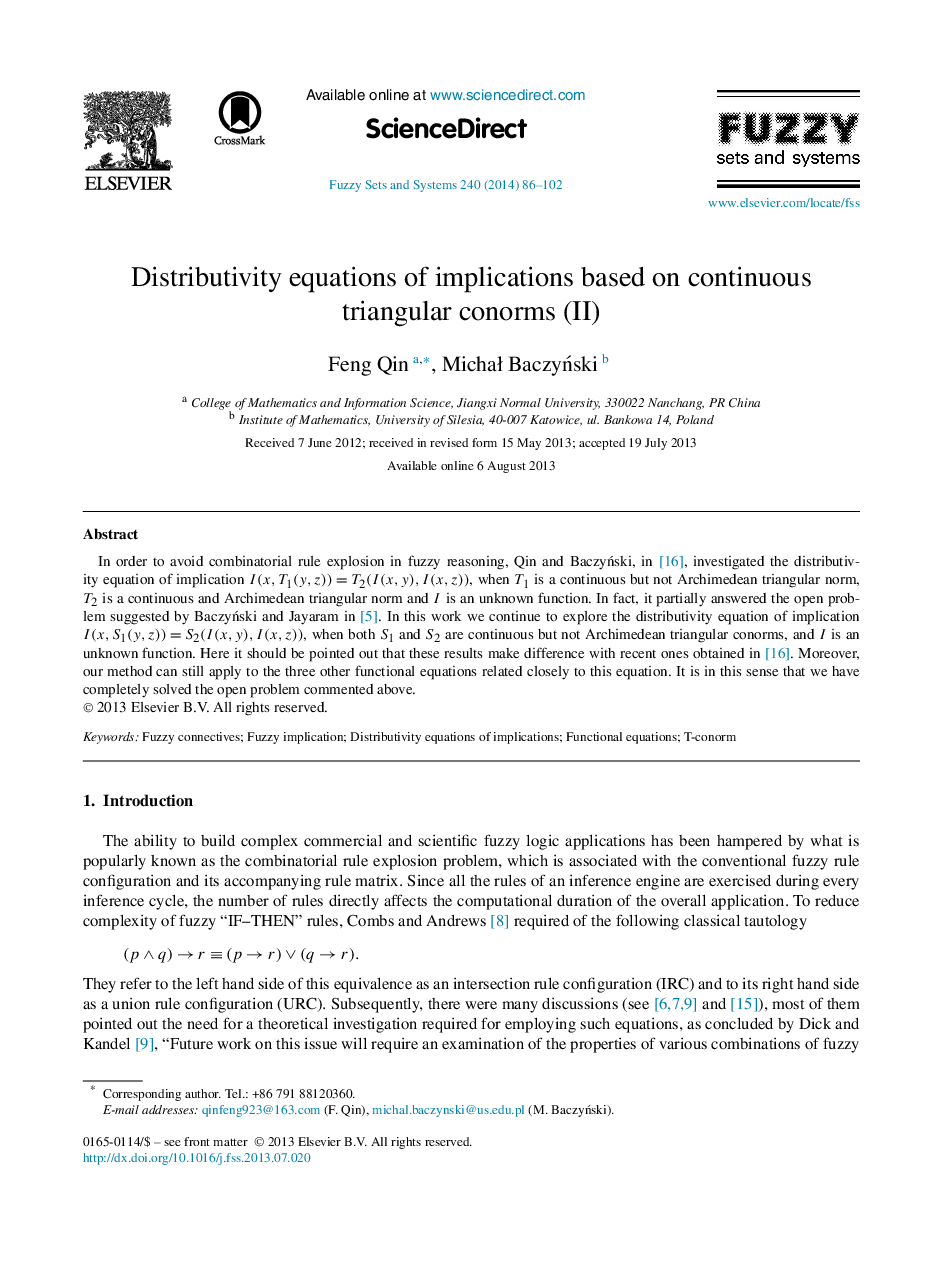| Article ID | Journal | Published Year | Pages | File Type |
|---|---|---|---|---|
| 390063 | Fuzzy Sets and Systems | 2014 | 17 Pages |
In order to avoid combinatorial rule explosion in fuzzy reasoning, Qin and Baczyński, in [16], investigated the distributivity equation of implication I(x,T1(y,z))=T2(I(x,y),I(x,z))I(x,T1(y,z))=T2(I(x,y),I(x,z)), when T1T1 is a continuous but not Archimedean triangular norm, T2T2 is a continuous and Archimedean triangular norm and I is an unknown function. In fact, it partially answered the open problem suggested by Baczyński and Jayaram in [5]. In this work we continue to explore the distributivity equation of implication I(x,S1(y,z))=S2(I(x,y),I(x,z))I(x,S1(y,z))=S2(I(x,y),I(x,z)), when both S1S1 and S2S2 are continuous but not Archimedean triangular conorms, and I is an unknown function. Here it should be pointed out that these results make difference with recent ones obtained in [16]. Moreover, our method can still apply to the three other functional equations related closely to this equation. It is in this sense that we have completely solved the open problem commented above.
